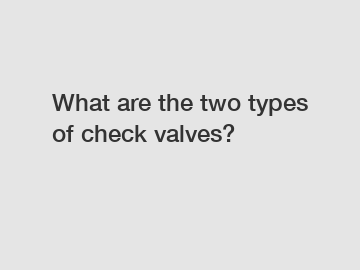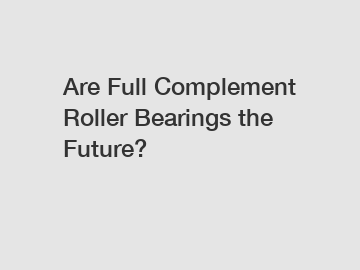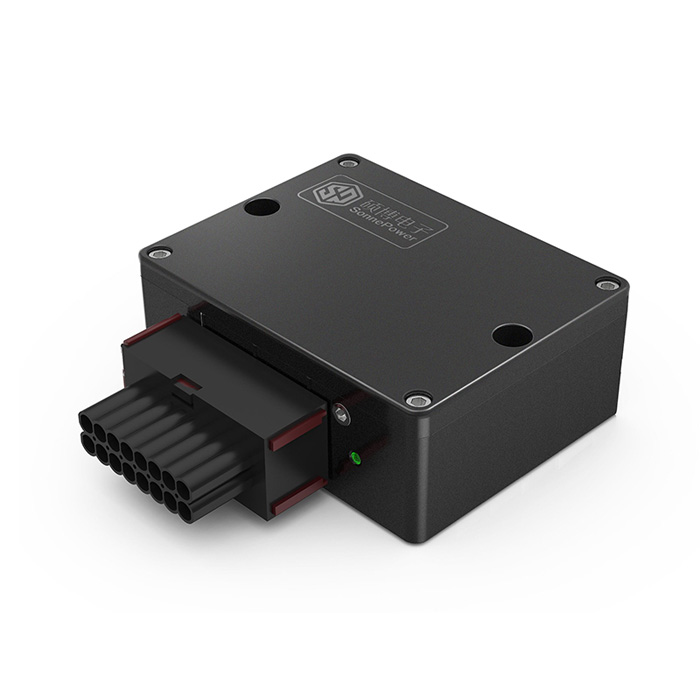What are the two types of check valves?
Check valves are essential components of pipelines and piping systems that allow fluid to flow in one direction while preventing reverse flow. There are two main types of check valves - swing check valves and lift check valves. Each type serves a specific purpose and is used in various applications depending on the requirements of the system. Understanding the differences between these two types of check valves can help in selecting the right one for a particular application.
Types of Check Valves:
Swing Check Valves:

Swing check valves are one of the most common types of check valves used in piping systems. They consist of a hinged disc that swings open to allow flow in one direction and closes to prevent backflow. When the flow stops or reverses, the disc swings back into a closed position due to gravity and pressure from the fluid. This design enables the valve to automatically close and prevent reverse flow without the need for any external assistance.
Swing check valves are suitable for applications where there is a steady and consistent flow of fluid. They are commonly used in water distribution systems, sewage systems, and other applications where backflow prevention is essential. Swing check valves are available in various sizes and materials to suit different operating conditions and fluid types.
Lift Check Valves:
Lift check valves operate on a different principle than swing check valves. Instead of a swinging disc, lift check valves have a straight disc or piston that moves up and down to control the flow of fluid. When the fluid flows in the correct direction, the disc or piston lifts to allow passage. If there is a reverse flow or backflow, the disc or piston drops back down to block the flow.
Lift check valves are commonly used in applications where space is limited or where a vertical installation is required. They provide reliable and efficient backflow prevention and are suitable for systems with variable flow rates. Lift check valves are often used in steam systems, boiler feedwater systems, and other high-pressure applications where tight sealing is essential.
Explore more:Which European Swivel Eye And Eye Casting is Best for Purchase?
What are the top considerations when buying oil and gas drilling equipment bearings?
Revolutionizing Engine Performance: Mitsubishi Oil Seal Update?
Why is the release bearing important?
Is Seal Technology Hong Kong Limited Innovating Enough?
The Ultimate Guide to Global Valve Solutions: Answers to Top Google User Questions
Are Rose Gold Rooms Still a Timeless Trend?
Key Differences:
The key difference between swing check valves and lift check valves lies in their design and operation. While swing check valves rely on a swinging disc to control flow, lift check valves use a straight disc or piston that moves up and down.
Swing check valves are more suitable for applications with a consistent flow of fluid, while lift check valves are ideal for systems with variable flow rates or limited space.
Both types of check valves are available in a range of sizes, materials, and configurations to meet specific application requirements.
Conclusion:
In conclusion, swing check valves and lift check valves are two main types of check valves used in piping systems for backflow prevention. Each type has its advantages and is suitable for different applications based on the system requirements. Understanding the differences between these two types of check valves can help in selecting the right valve for a particular application.
If you have any questions or need further information about check valves, please feel free to contact us. Our team of experts is always ready to assist you in finding the perfect check valve for your specific needs.
Contact us to discuss your requirements of one way hydraulic check valve, hydraulic control check valve factory, Electromagnetic Relief Valve for Sale. Our experienced sales team can help you identify the options that best suit your needs.
Explore more:Is butt welding reducer the best choice for your business?
What is the best pump for moving slurry?
Enhancing Vehicle Safety with OEM Rubber Trim: How?"How can OEM EPDM rubber edge trim enhance vehicle safety?
Mastering Lost Wax Casting for Stunning Jewelry
Top 5 Benefits of Using Pipe Cladding Machines?
Revolutionizing Industrial Automation: Electric Actuators Unleashed?
Maximizing Efficiency: Overhead Conveyor Load Side Rollers










